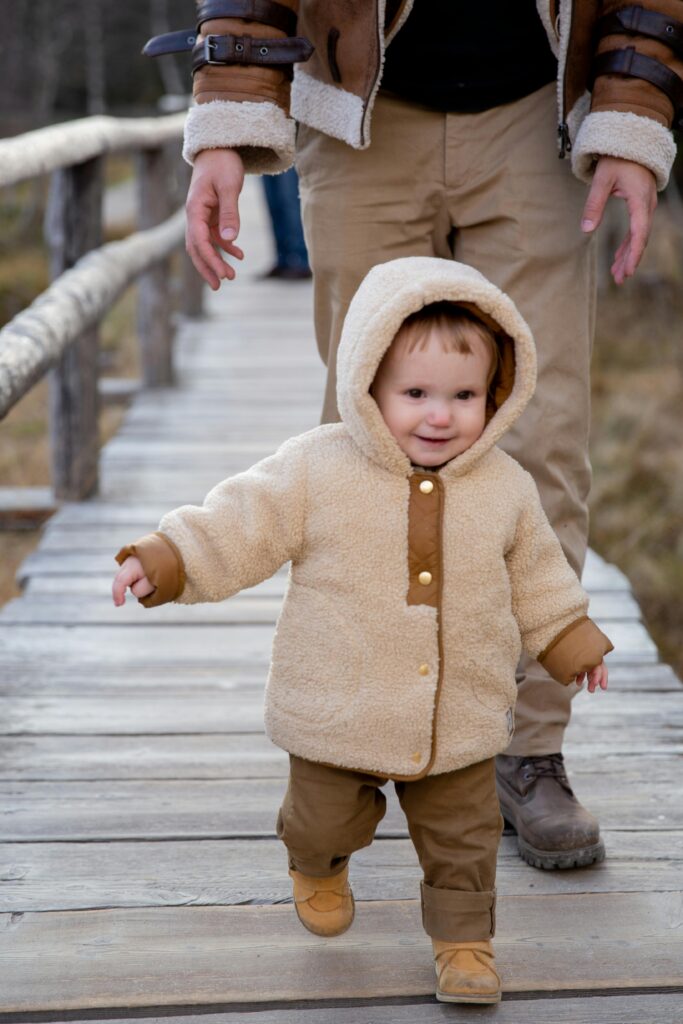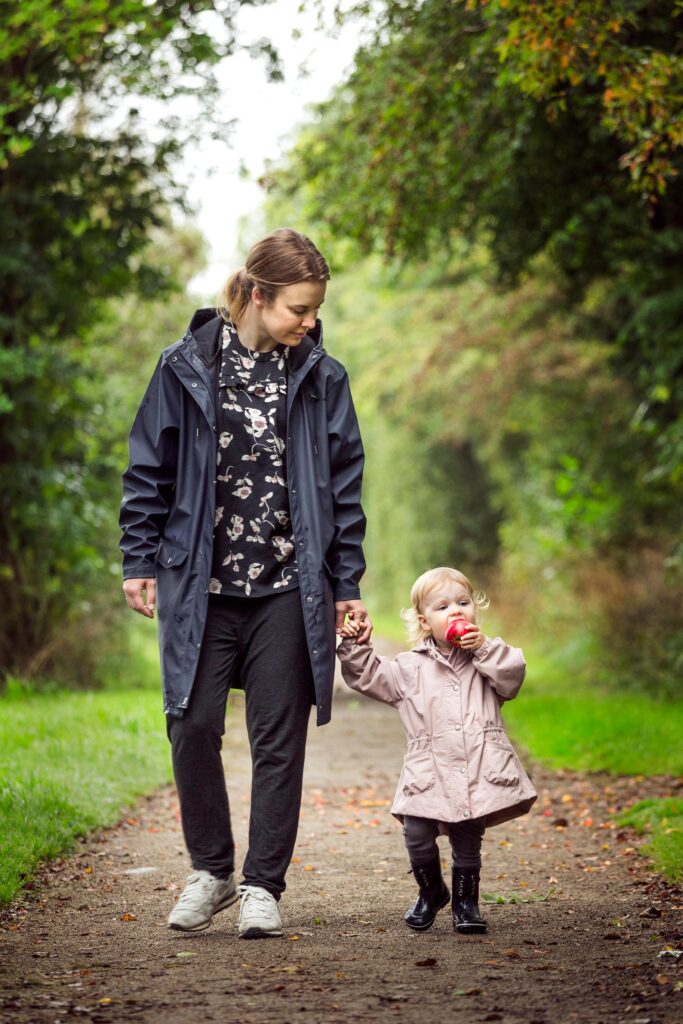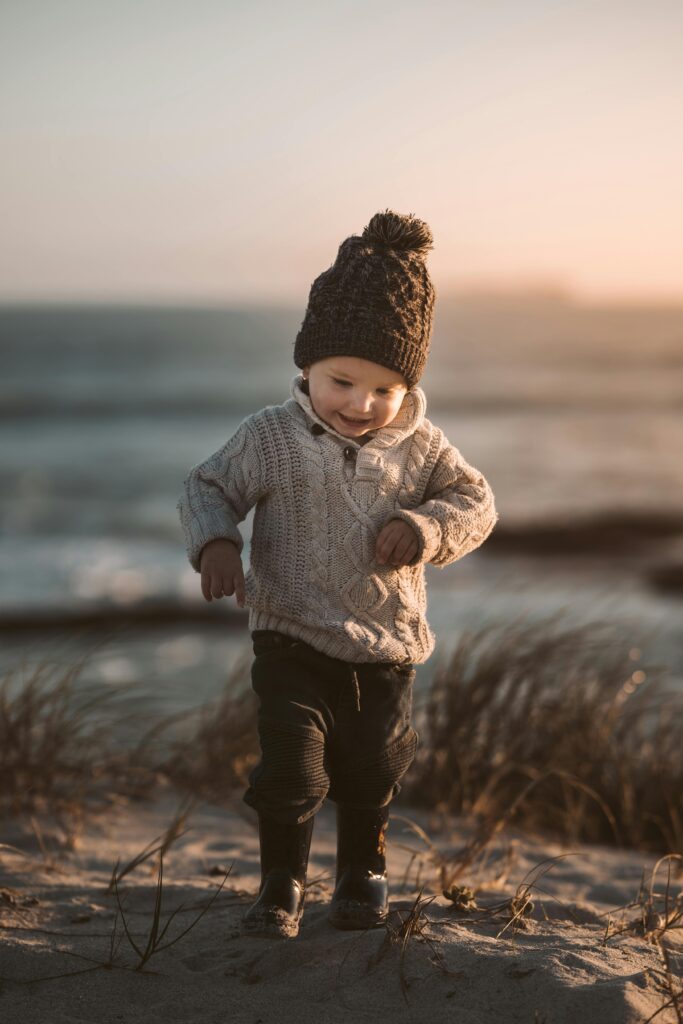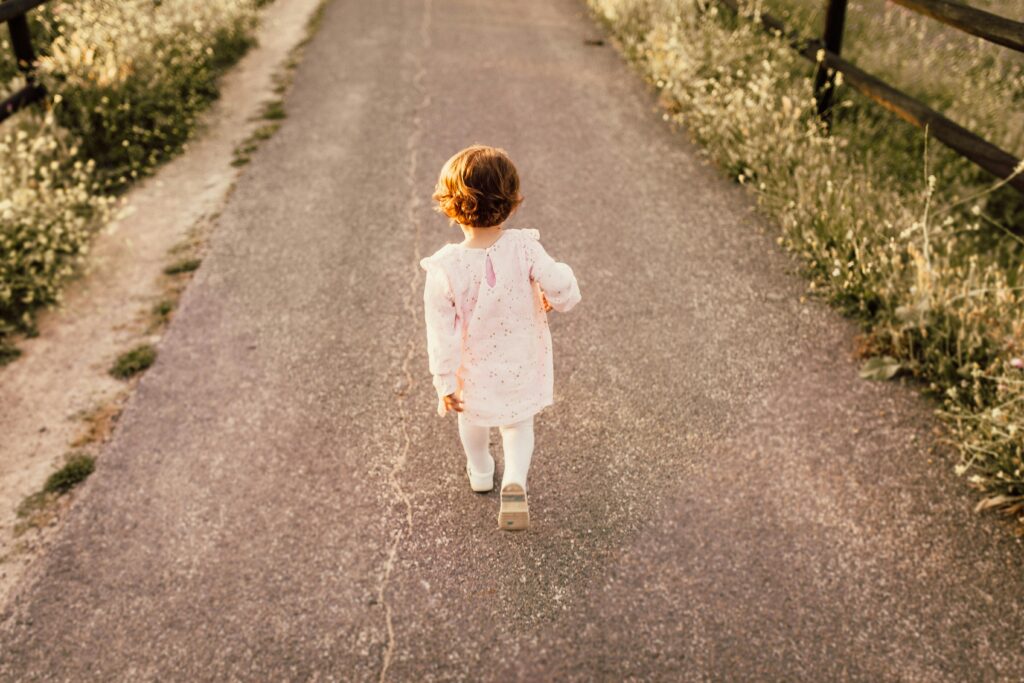Do you want to know more about baby shoes? You have come to the right place! Beneath the adorable baby feet, there’s a lot of activity. At birth, your baby’s feet have 22 partially formed bones; by the time they are five years old, those numbers will have increased to approximately 45. When they reach adulthood, they will merge to produce 26 fully-formed bones. The question now becomes, when is the best time to purchase your pair of baby first walking shoes? We’ll talk about the ideal time and how to choose your baby’s first shoes in this guide.
Table of Contents
From Cruising To First Steps

You may be pretty sure that your baby has started to get the hang of cruising when you start thinking about first baby shoes. It usually begins between the ages of 10 and 18 months. Between crawling and walking is a stage known as “cruising,” during which your child climbs onto objects and begins to slide with their hands and feet.
However, resist the urge to dash to the shoe store; your child will only require shoes once they can walk independently. Going barefoot is ideal so they can become accustomed to walking independently. If they don’t fit properly, shoes could impede their growth or get in the way.
No Rush To Wear Baby Shoes

During this year, your child will experience the momentous occasion of taking their first independent steps. No youngster should be hurried; they all grow at different rates. But now that they’ve achieved this point, it’s time to attain their next milestone: their first pair of shoes.
The weather does have a small impact on how important they are. Your child may be able to spend a few more weeks in the garden or neighborhood park without bare feet or socks if it’s a hot summer. If the fall leaves are stifling underfoot or it’s the drizzling season, you should shield your feet from the weather sooner rather than later.
A Fitting Occasion
One thing that cannot be done online is first shoe shopping. Use the Children’s Foot Health Register to find the location of your neighborhood shoe store, then bring your child in for a fitting. To capture the event, you should take many pictures and record a few videos.
When you got your shoes fitted as a child, do you recall those large, unsettling devices that measured shoe sizes? Fortunately, they have disappeared. Your fitter will most likely estimate the width and length of your foot using a hand-held small gauge. Furthermore, as humans are not exactly symmetrical, it is typical for one foot to be larger than the other; therefore, the larger foot will be used to determine the size. Once the measurements are complete, you will know the size of your child’s feet and may start shopping.
Getting The Basics Right

Knowing the fundamental characteristics to search for before thinking about colors and designs is helpful. Doing this ensures that your child can grow normally and comfortably into their first pair of baby shoes. This helpful checklist is provided by the College of Podiatry:
- To avoid tripping, look for soles that are closely cropped.
- Verify if the shoe has space for expansion and mobility.
- For excellent, comfy feet, look for baby shoes with soft leather uppers.
- To help with walking development, choose baby shoes with flexible, light soles. Parents we speak to say that most brands’ pre-walkers are pretty soft and suitable for the first few months of walking.
- Seek completely adjustable fastenings.
- To ensure support and protection, look for baby shoes with padded ankles. Here again, using common sense is essential. When they try on a few styles, some parents tell us it’s evident which one their baby is most comfortable in. While some prefer them below the ankle, others want high ankle support.
Don’t worry if that seems like a lot to consider; your fitter will also be available to assist you. This is the exciting part.
Choices, Choices

You have a plethora of options when you keep those guidelines in mind. This is your likely primary concern. Although leather uppers are fantastic, natural materials like cotton or canvas work. The problem with plastic or synthetic uppers is that they keep your toddler’s feet from breathing, leading to sweat and blistering. The same rule applies to socks: opt for a natural material like cotton.
Velcro is your buddy for coats and outer pants; simple fasteners will help motivate your toddler to wear and take off their shoes when ready. However, consider buckles or laces if they want to keep taking them off. All three solutions are good choices because they control the foot in position and stop it from sliding forward, which can pinch little toes.
When choosing your child’s first pair of shoes, look for reputable brands. Since leather shoes conform to the foot’s contour, you should never give them to a different child whose foot type may not be a good fit. This is because it could impair the growth of their feet.
Once you’ve decided to buy your child their first pair of shoes, you’ll see how rapidly their feet expand. Purchasing baby shoes can become a costly hobby. While almost new toddler clothing alternatives are usually a fantastic idea, shoes sadly need to be bought fresh because they quickly mold to the wearer’s foot. Once you’ve decided to buy your child their first pair of shoes, you’ll see how rapidly their feet expand. Purchasing shoes can become a costly hobby. While almost new toddler clothing alternatives are usually a fantastic idea, shoes sadly need to be bought fresh because they quickly mold to the wearer’s foot.
The Much Less Heralded Second Pair, And Third, And Fourth…
Ensure your toddler’s shoes have enough room in the front for their tiny toes to expand and wiggle. Up to the age of two and a half, an average child would require a new pair of shoes every two to three months; their growth rate slows down slightly.
Children’s feet are not extremely sensitive and flexible; thus, they rarely complain about regions of friction or pressure. This implies that you should routinely assess how well their shoes fit.
More often than you would imagine, having your child’s shoes professionally evaluated for proper fit is crucial. Children under three should have this done every four to six weeks, followed by children between the ages of three and four every six to eight weeks and then every ten to twelve weeks.
Final Thoughts

When your child is five, their bones need to grow straight, so make sure their shoes fit correctly. Children’s feet proliferate. Your baby’s sensitive toe bones won’t be able to grow normally if they are constricted by tightly held socks or shoes. Like the rest, your baby’s feet will develop quickly, so ensuring their second, third, and fourth pairs of shoes fit just as well as their first is critical.


